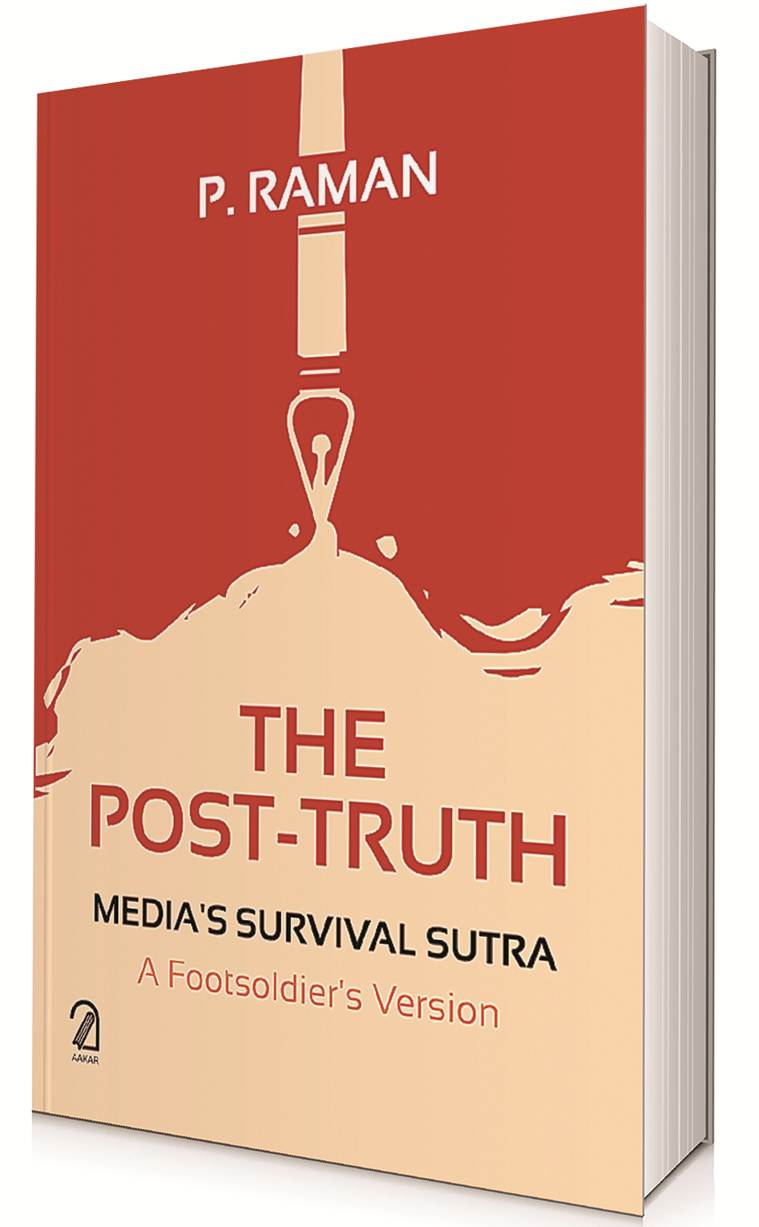Don’t Stop Press
A nuanced, critical take of the lndian media landscape from the perspective of an insider

Don’t Stop Press
THE POST-TRUTH MEDIA’S SURVIVAL SUTRA: A Footsoldier’s Version
P Raman
Aakar Books
212 pages
Rs 500
P Raman
Aakar Books
212 pages
Rs 500
Post-Truth is a perceptive insider’s chronicle of the history of the Indian media over half a century. P Raman, a former colleague, describes himself modestly as a foot soldier. In fact, he is a veteran political journalist of the old school with strong ethical convictions, who had a ringside view of the evolution of the mainstream English newspaper industry in the Capital. It is a nostalgic journey. Back in 1955 at the Avadi Congress session, the press room was a thatched shed, journalists carried their own bedrolls and only carbon paper and ink stands were provided. There were no phones and the reports were conveyed through telegraph lines from the nearest post office. Even the teleprinter came a little later. In today’s era of smartphones and computers, many journalists insist on nothing less than five-star accommodation at political meets.
But changes in communication and the lifestyle of scribes is a small part of the story. The new media, as Raman terms it, and he is not referring to social media, has rewritten the very rules of the game. Capitalism and market economics triumphed over old-world ethics and values. The author recalls the lofty status of the editor in the good old days when the owner generally met the editor in his office. His word was the law in the newspaper. But times have changed, especially in some of the largest newspapers in the country. Some venerable editors ended up taking orders from young management executives, who felt they had a better sense of news — which, they felt, should be driven by market forces. Today, hard news in the main newspaper is often buttressed by numerous soft news supplements over which the chief editor has no control. Samir Jain, as the young inheritor of the Times of India group, was largely responsible for undermining the status of the editor and revolutionising the manner in which many publications are run today (Raman cites the Indian Express as among the few exceptions). Jain was keen to show his editors their place as mere “skilled labour”. To get the point across, he once made them sit down with him on the floor and write out names on invitation cards for a newspaper function. Obituaries were generally banned, unless they were of major celebrities — the management argued that it would be a loss to the newspaper’s paid death announcement revenues. Advertorials — advertisements written by editorial staff as features, were introduced. When someone protested to Jain’s father, Ashok Jain, he pointed out proudly that his son had, in a short time, raised the company’s revenues eightfold. Old-timers dismissed Jain as an “upstart” who would destroy the Times’s by investing heavily in advertising and marketing at the expense of news. But it was thanks to these initiatives that the TOI became the largest circulated daily in the world. Jain’s hugely prosperous model was imitated by many others, and today, many second and third generation newspaper owners have taken over as editors. Raman bemoans other vanishing newspaper traditions which were once revered. Parliamentary coverage is superficial and limited. The Press
Council of India has been transformed into a white elephant.
The author concedes that a cosy, comfortable relationship between the government and the mainstream newspapers is not a recent phenomenon. Till the Emergency, most newspapers and newspersons had a symbiotic relationship with the establishment. It was felt that the reporter should not assume the role of the opposition. Accredited correspondents were allotted government bungalows meant for joint secretaries and many did not move out even after retirement. Raman recalls that the UNI bureau chief R Rangarajan seemed to know in advance about the Pokhran Tests of May 1974 and asked his staff to be on alert, but he did not think of breaking the story. Ramnath Goenka, owner of the Indian Express, was one of the first to adopt an adversarial tone in newspaper coverage.
The arrogance of power overtakes all ruling parties who eventually attempt to influence scribes or their owners, and control unfriendly reports, Raman concludes. Morarji Desai’s press adviser once handed the author a list of journalists whose phones were tapped manually — which included his own name and many sympathisers of the Janata Party regime. The Narendra Modi government is particularly adept and heavy handed at media management, Raman believes. Which is why it has not come under much critical scrutiny from the media despite sudden volte faces in foreign policy and badly implemented domestic economic policies. But Raman is a little short on specifics about the current regime, which has seen a phenomenal rise in television news channels, perhaps because he is no longer in active journalism. The book affirms, if you need confirmation, that while governments might swear about freedom of the press in theory, no government wants a totally free media in actuality.
For all the latest Lifestyle News, download Indian Express App






















No hay comentarios:
Publicar un comentario